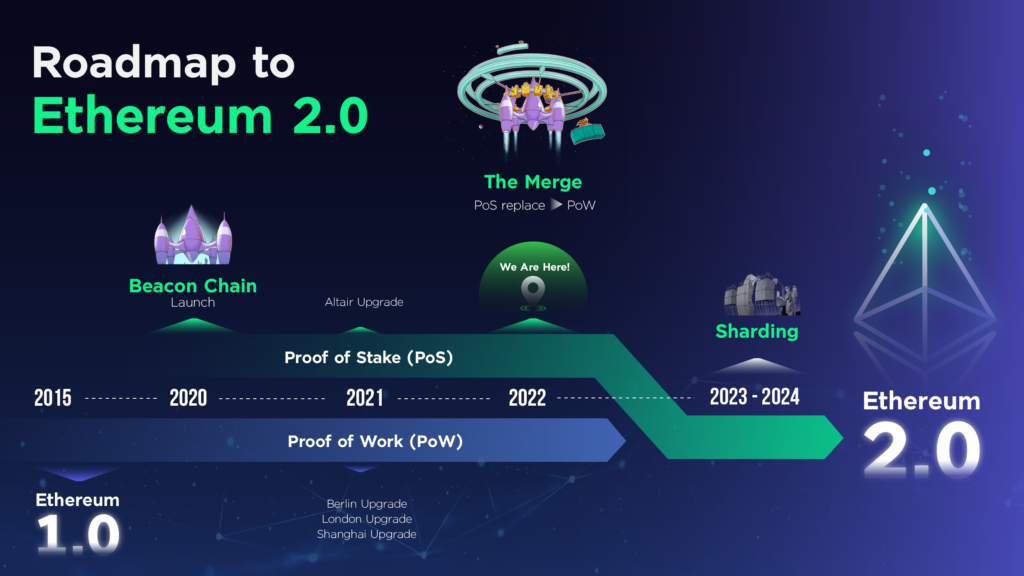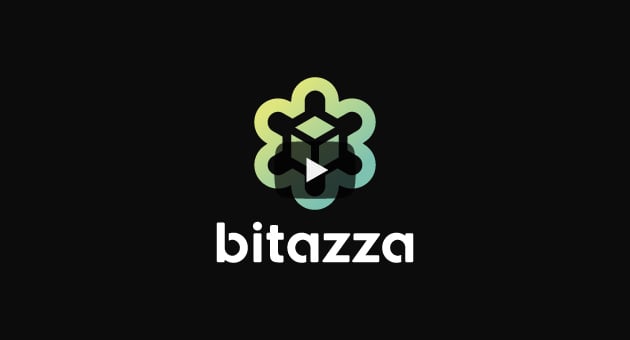As evidenced by Ethereum co-founder Vitalik Buterin’s early and later writings, he has been a long-time proponent of the proof-of-stake consensus mechanism.
Ethereum 2.0 “The Merge” will mark the end of Proof-of-Work and a complete transition to Proof-of-Stake as the consensus mechanism for the Ethereum blockchain. But adjusting the second-largest blockchain from one system to another is an incredibly complex, multi-step process. Therefore, each decision must be assessed thoroughly. .
We’ll take you through the stages of the Ethereum roadmap from 1.0 to 2.0!

2015 – Ethereum 1.0
The introductory paper was published in 2013 by Vitalik Buterin, the founder of Ethereum, before the project’s launch in 2015. To increase the number of validators and process transactions, Ethereum uses the Proof of Work protocol, where a network of participants runs software that attempts to prove that an encrypted number is valid, which benefits and appeals to developers as it is neutral. They don’t need ETH to get started.
2020 – Beacon Chain
The Beacon Chain went live on 2020. It introduced proof-of-stake to the Ethereum ecosystem, coordinated the network, served as the consensus layer, and precursor the upcoming sharding. Four main upgrades occurred in 2021, which are London, Berlin, and Shanghai upgrades on the mainnet and Altair upgrades on the Beacon chain.
2022 – The Merge
The Merge is intended to shift the Ethereum blockchain from the current proof-of-work (PoW) consensus mechanism to a proof-of-stake (PoS) model designed to be faster and more energy efficient. PoS is predicted to reduce the network’s energy consumption by at least 99.95% and pave the way for shard chains in the following upgrades. After the merge, Ethereum will then undergo further upgrades, which he calls the “surge,” “verge,” “purge,” and “splurge”
2023-2024 -Sharding
Sharding will follow “The Merge” in multiple phases, tentatively beginning sometime in 2023-2024. Sharding is the process of splitting a database horizontally to spread the load, which will work synergistically with layer two rollups by splitting up the burden of handling the large amount of data needed by rollups over the entire network. This will continue to reduce network congestion and increase transactions per second. Aim to finish by 2023-2024.
*The Merge will be activated at a Terminal Total Difficulty (TTD) of 58,750,000,000,000,000,000,000, which is predicted to happen around 15 September 2022, though the exact time and date will depend on hashrate of the network.
More from Bitazza Blog
The Top Benefits of Using Mobile Apps for Crypto Trading
Cryptocurrency trading is gaining momentum in Thailand. A Statista report revealed that, as of January 15, 2024, there were approximately …
Freedom DAO Vote #4: NOW OPEN!
Freedom DAO Vote #4: NOW OPEN! 📢Freedom DAO Vote #4 is now open. Prepare your Freedom Passport and get involved! Now’s …
Get to know all the 17 tokens for Voting in Freedom DAO #4
Your voice matters! Vote in Freedom DAO #4 to choose the new tokens you’d like to see listed on Bitazza. …
























